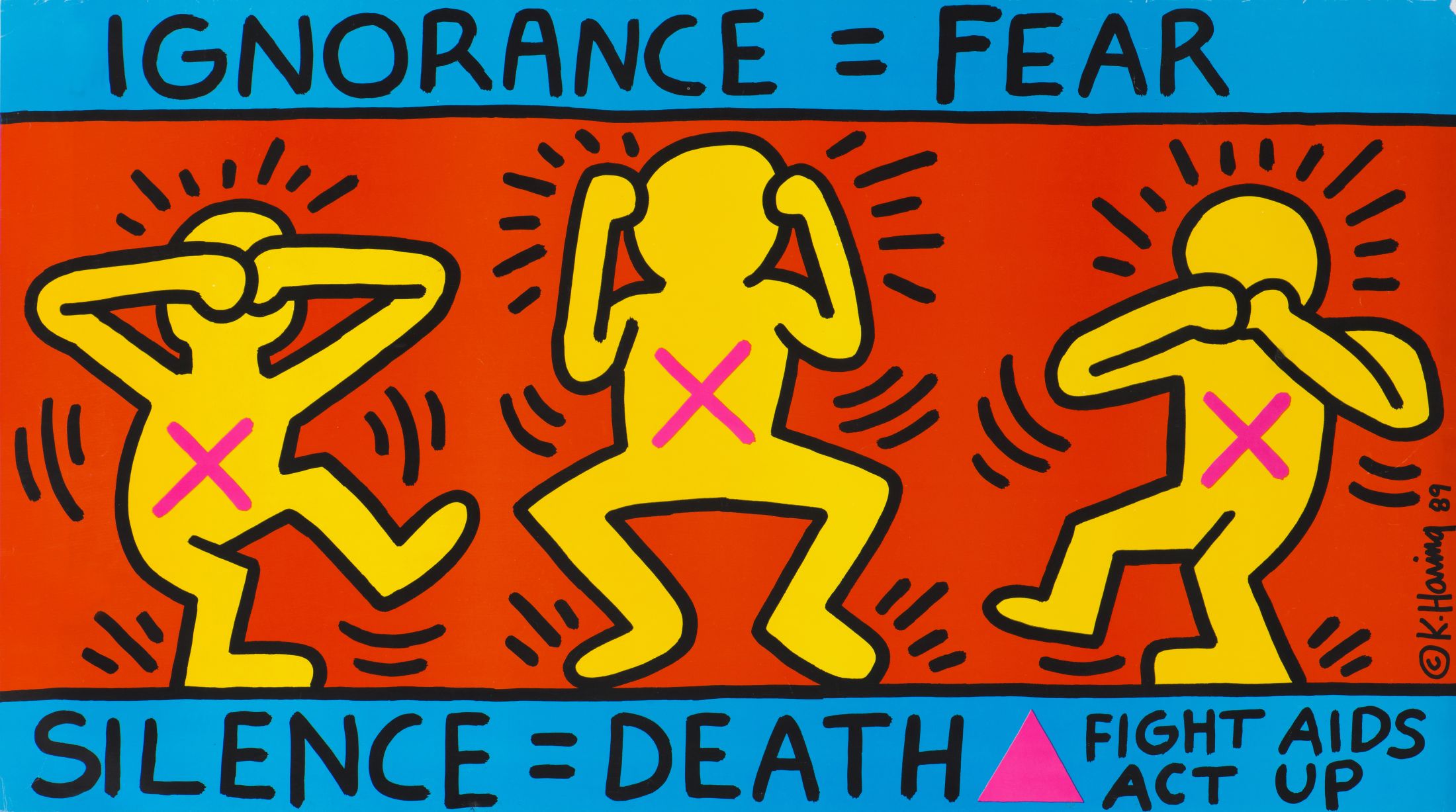Madeleine Gauci Green reviews the brilliant Keith Haring exhibition at the iconic Tate Liverpool.
The Keith Haring exhibition, at Tate Liverpool, appropriately launched in the month of Pride, demonstrating support for Haring as both an artist and an activist, whose artwork has consistently spoken out against urgent issues of the time including homophobia, racism, capitalism, drug addiction, AIDS awareness and the apartheid. The exhibition is Haring’s first major exhibition in the UK, exhibiting over 85 works of Haring’s art. These were all created over the ten years leading up to his death, from paintings and drawings to videos, most of which have never been viewed in the U.K before.
In addition to the highly recognisable, loud, radiant and colourful cartoon-like imagery of barking dogs, crawling babies and angels, the exhibition is complete with archival footage, videos, posters and photographs which evoke both the style and spirit of 1980s New York. It adds another dimension to Haring and the performative nature of his work from live chalk drawings to a video which follows Haring drawing himself into a corner. The exhibition considers the important influences upon Haring and his work, from hip-hop music to the New York clubbing scene to other artists of the time such as Andy Warhol. The ultraviolet room, Black Light, is one of the most exciting parts of the exhibition; a dark room with neon lighting and Haring’s work on the walls glowing in bright oranges and greens. Pumping dance and hip-hop music transports the spectator to a vibrant 80s, where the music, atmosphere and setting all become a part of the art.
The Matrix covers an entire gallery wall, standing out and creating an unforgettable piece filled with black Haring style cartoon-like drawings on a stark white canvas, which you can sit down to take in or walk along to explore the huge piece and all its images. However, Haring’s work is more than just entertaining and appealing playful imagery; Tate draws a focus upon Haring’s constant desire to bring relevant social and political issues to light through his accessible, fun work, clearly exhibited through work including Crack is Wack and pieces promoting safe sex and fighting the AIDS crisis, as well as videos of Haring at protests.
Accessibility has always been crucial within Haring’s art; as he said himself, ‘art is nothing if you don’t reach every segment of the people’. Interviews with Haring show his desire for people to access his work not only in galleries but also through his ‘Pop Shop’ and his street art throughout the New York subway and streets, uniting both art and popular culture as well as creating communal works of art with residents in New York, consistently engaging with and captivating as many people as possible.
Ultimately, through the use of video footage and Haring’s own art, this exhibition is highly successful in highlighting the importance of his work, not only for the recognisable, fun and approachable energetic use of line, colour and imagery, but also through the political and social messages displayed and their accessibility and ability to impact and inspire over a multitude of generations.
Image Credit: Keith Haring

